- | 8:00 am
GM just opened a sprawling new design center that will help shape the future of its cars
With ample light and a radically open layout, General Motors’ new design center is changing the way its designers work.

General Motors has just revealed its massive new design building. It’s already changing the way the automaker designs cars.
Located at GM’s Detroit-area Technical Center campus, the 360,000 square foot facility expands capacity for up to 1,500 designers, with much of the area dedicated to the 44 mills where full-sized model cars are sculpted and formed out of clay. Combined with the old design building, itself covering more than 225,000 square feet, GM now has what it calls the largest automotive design facility in the world.

The building is part of a $1 billion upgrade of the Technical Center campus, opened in 1956 and celebrated as an icon of modernist architecture and space age design. Listed on the National Register of Historic Places and named a National Historic Landmark, the campus was designed by architect Eero Saarinen, who put many of the campus’ most elegant design flourishes in the original design facility, including its showpiece Design Dome.
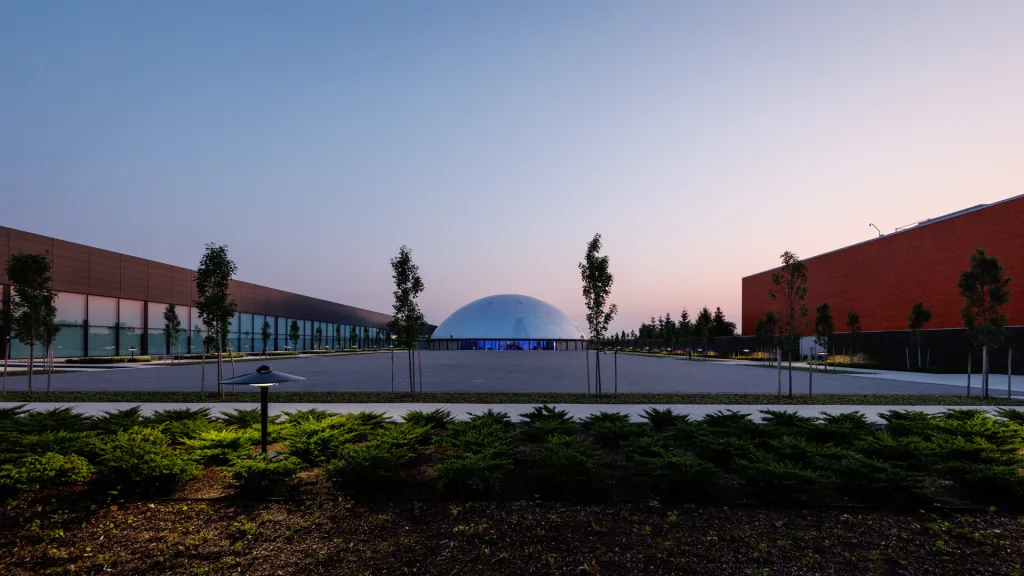
A CAMPUS FOR AUTO DESIGN
The new building, called Design West, is a gigantic but low-slung counterpart to the existing design building. It wraps around the shining metallic dome, standing next to the old building on what was formerly a surface parking lot. Designed by SmithGroup, the new building does not overshadow the old, at least from the outside. Inside, it’s a light-filled design factory, with a wall of windows along the wide open voids where cars are sculpted. Deeper inside the building, designers’ desks sit under the overhang of a mezzanine, which holds various offices, conference rooms, and hoteling workspaces with clear views down to the design floor. About 700 people are now working in the facility.
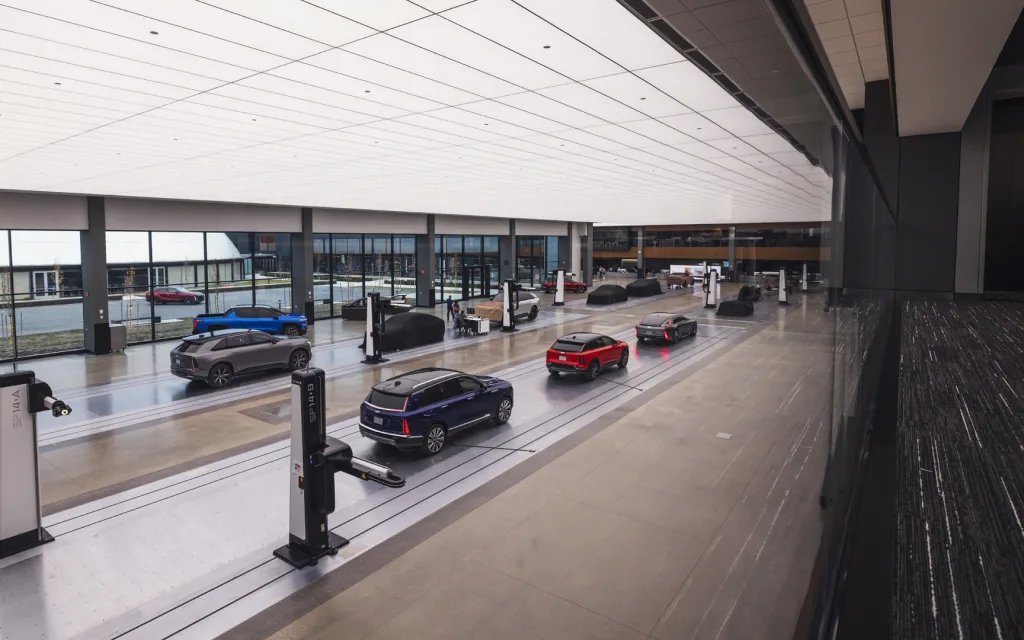
The long, bracket-shaped building ushers in a new phase in GM’s approach to design, according to Michael Simcoe, GM’s senior vice president of global design. The old building’s design spaces were mostly compartmentalized, with each brand keeping to itself and plenty of security-access doors in between to foil corporate espionage. The new building does away with the separations, and the open design floor allows for and even encourages GM’s many distinct brands to keep an eye on each other’s works-in-progress, and ideally learn from them.
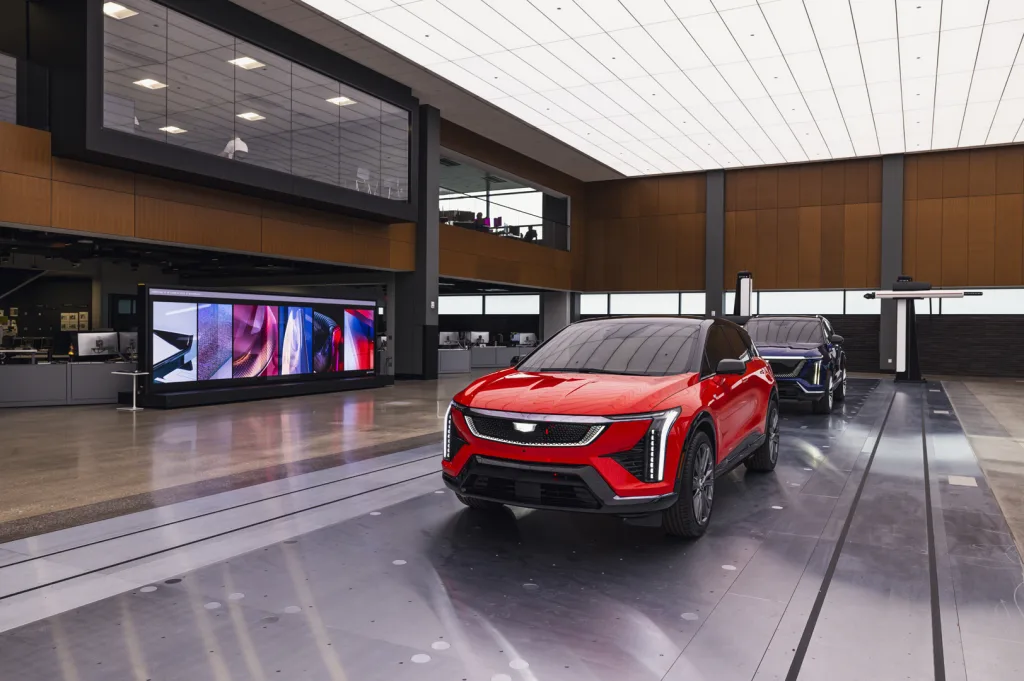
Walking through the massive building on a recent tour, I saw sculptors carving away at scale clay models of potential new cars. One designer, holding a remote control in her hand, leans in about an inch from the clay to watch the head of a five-axis robotic mill cut a fine layer off the surface. Nearby, teams of designers cluster around large screens to compare in-progress design elements. Farther beyond, hexagon rings of workstations are filled with digital models on everything from fenders to dashboard displays to steering wheels.
Simcoe says the new facility brings all these designers into close contact with one another, and with the car models themselves, allowing for a more tangible sense of what they’re designing. Along the three sides of the building that wrap around the Design Dome, glass walls flood the design floor with light. “This is scarily open for a secure environment,” Simcoe says.

THE NEED FOR LIGHT
Windows were a key part of Saarinen’s design for the old building, and flooded its design studios with daylight. That was once essential to the hand drawings that car designs were based on, but today most of the design work happens on computer screens. In those older studios, which are still actively used, makeshift caves of foam core board have been built around the computer monitors to block the glare.
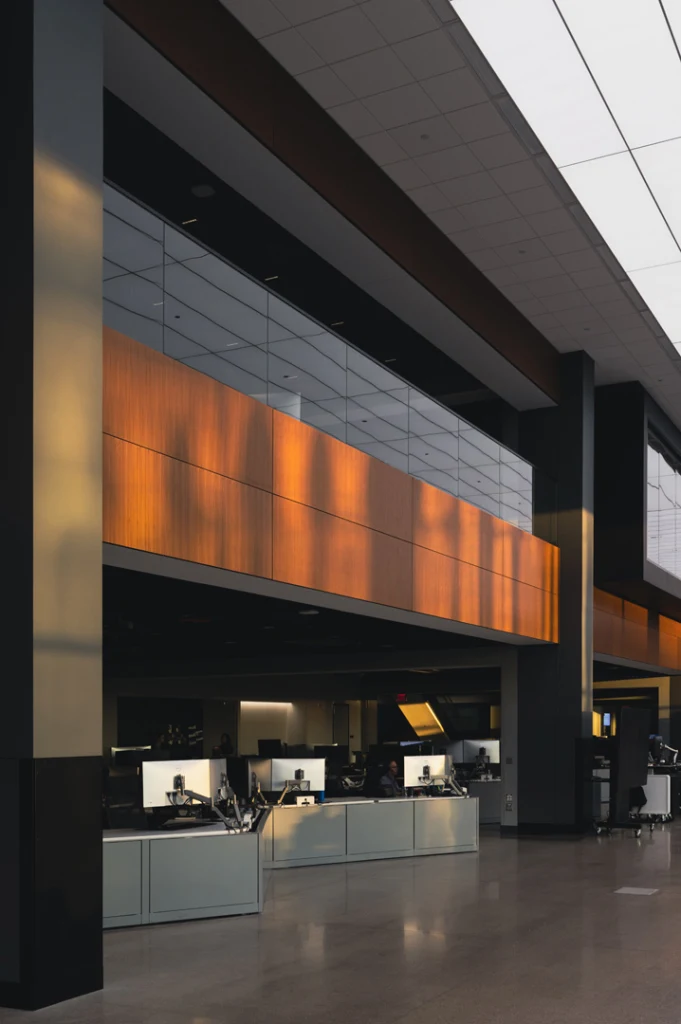
That’s not a problem in the new building. With a deeper footprint, Design West tucks computer work farther away from the sun, and lets as much natural light as possible into the spaces where sculptors and designers use the robotic mills and hand tools to refine the shapes and forms of cars. Programmable LED light panels cover the entire ceiling over the modeling mills and can create different lighting conditions so designers can assess their models’ curves.
Simcoe says there was no argument about setting aside so much space for physical models, even at a time when many aspects of cars can be designed in digital or even virtual environments. “Leadership, all the way to the top, recognizes the importance of physical interaction with the models,” Simcoe says.

That includes the simple act of seeing a car in natural sunlight. Designers and executives have long used a courtyard next to the Design Dome to view cars in broad daylight, but it was often a complicated process to get the models there from the studios in the old design building. “It could take up to 35 minutes to get a car out from one of the underground studios. You’d be winding your way out of a studio and into the courtyard,” says Mike McBride, GM’s executive director of global design operations. The new building wraps around this courtyard, and simple garage style access points have been added throughout. “Now you just drive through a door.”
SHAPING A DESIGN HEADQUARTERS
Other more formal spaces are also a big part of the new building, including a prime corner conference room for GM’s board, and an executive presentation room that features a curved 55-foot-long screen made up of 76 million pixels. Hallways throughout the building are big enough to drive a car through, and many presentation rooms feature garage-sized sliding doors, including the board room, which has enough space to present a new car.
Internal teams were intimately involved with the project, including industrial designers who created Saarinen-inspired decoration to surround elevator bays. A three-generation family of GM wood workers milled a special fluted wall on the end of the building alongside a main road leading into the campus. At night, it has a honey-toned glow that draws the eye in.
Art is on display throughout the building, including many pieces created by staff who practice various art forms outside of work. There are also bits of GM’s design history on view, like one of the original 25-foot-long wooden propeller blades used in the company’s first aerodynamics wind tunnel, which is hanging in part of a 900-foot hallway that runs the length of the building.
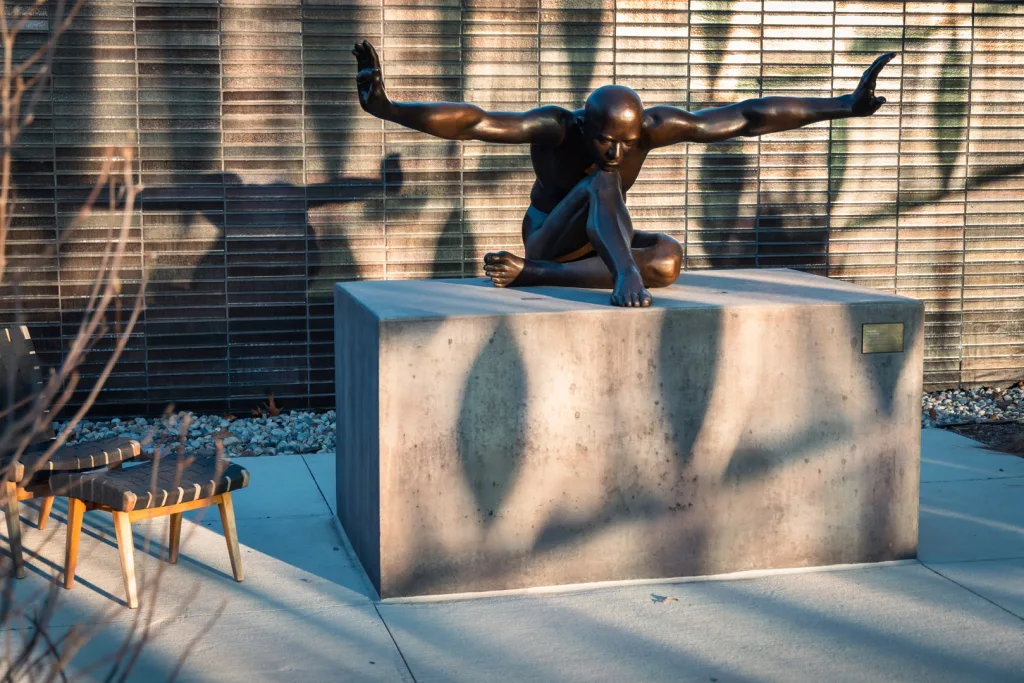
Other spaces are more traditionally appealing. The formal main entrance to the new building recalls the midcentury elegance of Saarinen lobby. (Though his famous cable-supported staircase could not be replicated due to modern building codes.) Every GM car from model year 1956 through 2024 was designed in that old building, and it has a strong reputation within the company. A long service and pedestrian tunnel connecting the old building and the new is decorated with dozens of panels painted in colors of cars produced each year in the old building, running chronologically.
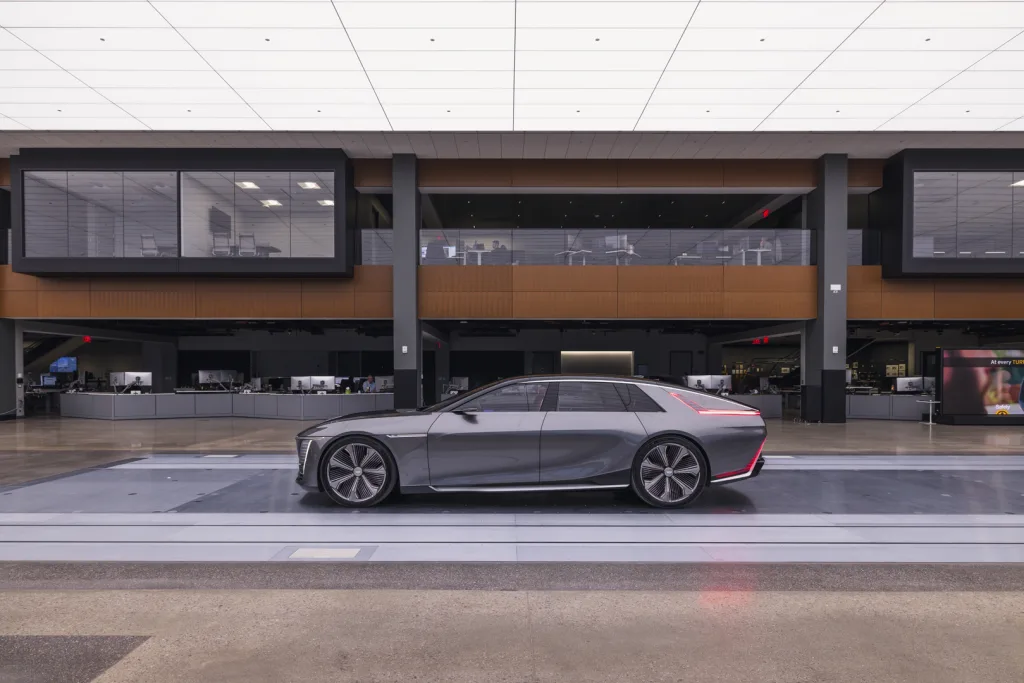
But the new space is a welcome change. Simcoe says in addition to a bigger space, the design of the building allows more interaction and collaboration between designers, and more people able to be involved. He believes the building’s openness is a hedge against future technological change, allowing for a more flexible adaptation than what was possible in old studio spaces built for drawing by hand. The lightness and openness also allows more eyes on projects that previously would have been locked away, giving more opportunity for design criticism and improvement. “It seems very benevolent,” Simcoe says, “but it’s all about control.”








































